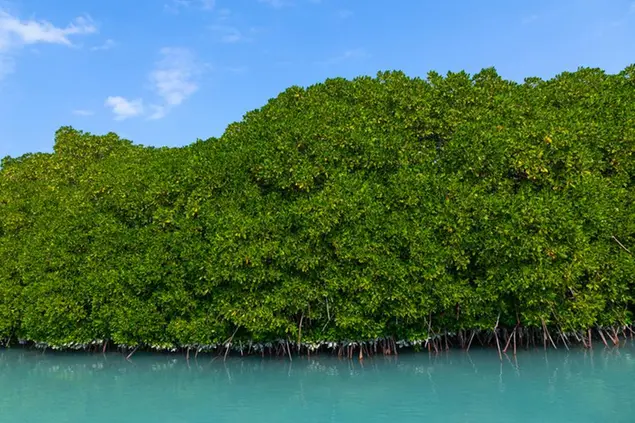PHOTO
DOHA: The Ministry of Environment and Climate Change (MECC) has said that over 9,000 mangrove (Avicennia Marina) seedlings have been produced in Qatar this year.
The mangrove tree is one of the most important plants in the Qatari environment, so the country has been keen to give them special importance in their care and preservation.
The country made remarkable achievements in increasing the mangrove forests along the coastal area of the country.
The Ministry shared the history of Qatar’s interest in planting and protecting mangroves on its X platform.
1981: The State of Qatar began planting and nurturing mangroves in 1981. The number of cultivation areas reached 13 sites along the coast of the country 1997.
In 2006, the Supreme Council of Environment and Natural Reserves designated mangrove ecosystems as nature reserves.
A memorandum of understanding was signed in 2023 to establish the National Program to Conserve Qatar’s Coastal Ecosystems, involving the Earthna Center for a Sustainable Future, Qatar University, and the Ministry of Environment and Climate Change.
This year (2024), 6,000 mangrove (Avicennia Marina) seedlings were produced in Al Ghashamiya Center, and 3,000 in Al Dhakira Marine Nursery, in addition to establishing a new marine nursery in Fuwairit.
Natural Mangroves are located in Al Khor and Al Thakhira beaches. Successful cultivation made in several areas, including Al Ruwais, Umm Al Houl, Fuwairit, and Ras Matbakh.
The mangrove green belt has many benefits, such as capturing massive amounts of carbon dioxide emissions and other greenhouse gases from the atmosphere. Mangrove forests stabilize the coastline, reducing erosion from storm surges, currents, waves, and tides.
The intricate root system of mangroves also makes these forests attractive to fish and other organisms seeking food and shelter from predators to ensure food security.
Currently, Earthna is leading a project to restore mangroves in Qatar, in close cooperation with MECC and Qatar University. In addition to restoring these key ecosystems, these efforts will provide a better understanding of the ecological interactions between mangroves, sea grasses, and coral reefs.
The project will also explore the concept of “nature-based solutions” by enhancing our understanding of mangroves as natural, integral elements of coastal resilience in the face of sea level rise caused by global warming.
Mangrove forests stabilize the coastline, reducing erosion from storm surges, currents, waves, and tides. The intricate root system of mangroves also makes these forests attractive to fish and other organisms seeking food and shelter from predators. There are many different species of mangrove trees. All of these trees grow in areas with low-oxygen soil, where slow-moving waters allow fine sediments to accumulate. Mangrove forests only grow at tropical and subtropical latitudes near the equator because they cannot withstand freezing temperatures.
Many mangrove forests can be recognized by their dense tangle of prop roots that make the trees appear to be standing on stilts above the water. This tangle of roots allows the trees to handle the daily rise and fall of tides, which means that most mangroves get flooded at least twice per day.
The roots also slow the movement of tidal waters, causing sediments to settle out of the water and build up the muddy bottom.
© Dar Al Sharq Press, Printing and Distribution. All Rights Reserved. Provided by SyndiGate Media Inc. (Syndigate.info).
